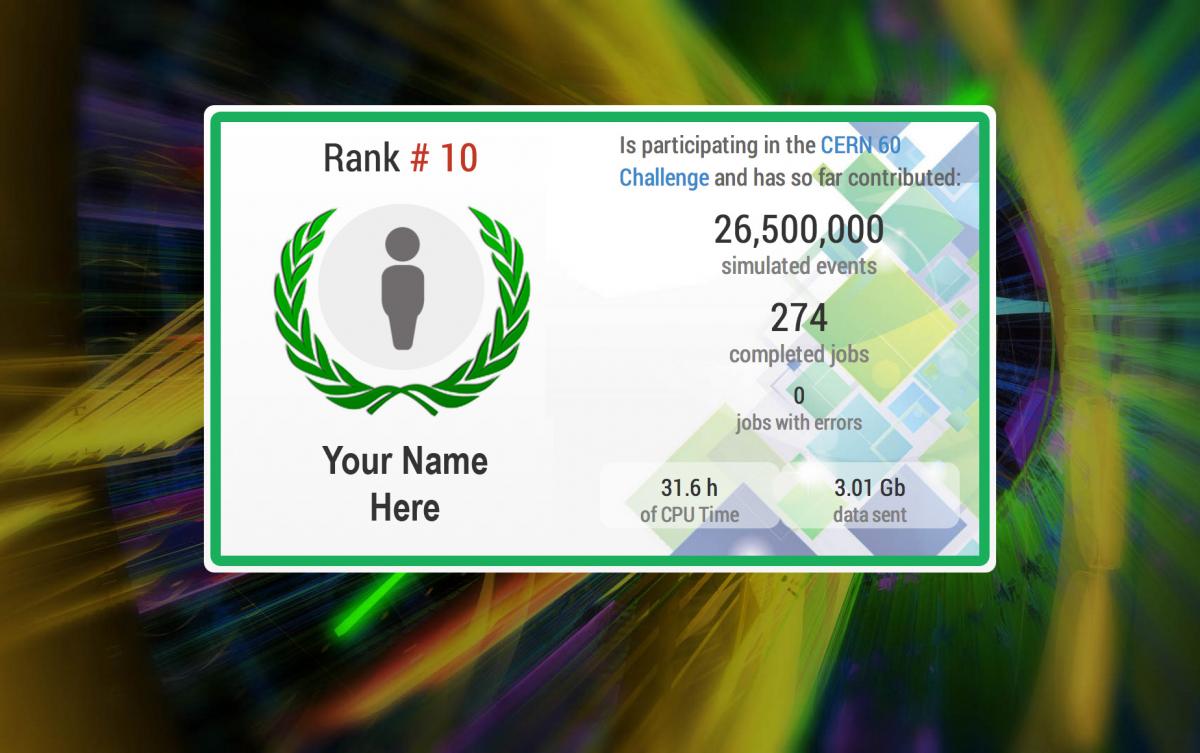CERN 60: Public Computing Challenge
On Monday 8 December, the CERN 60 Public Computing Challenge began. Volunteers from all over the world are helping the CERN scientists simulate particle collisions in accelerators that have been used over the 60 years of the Organization's existence, including the LHC. They are required to install a simple program to their computers, which then uses the computer's processor to run the simulations.

The Challenge is going to last for 12 days, until 20 December, and will allow the creation of a large database of simulations and experimental data, as well as test the concept of browser based volunteer computing. “We are really curious to see how far we can push this new Web-based approach to volunteer computing,” says project spokesperson François Grey. “We have worked really hard to make it easy to use, so that newcomers can get going in just a few clicks, and so they can understand clearly what their computer is doing. Through this trial we want to test our infrastructure under realistic conditions, and study the behavior of the volunteers as they join the challenge, to understand how to improve that experience for them. This will help us integrate the new Web-based approach into future citizen science projects and games.”
The collected data will be used for the development of Virtual Atom Smasher, a game that will educate citizens about particle physics and allow them to contribute to scientific discoveries. It scheduled to be launched in 2015 in the framework of the Citizen Cyberlab project.

The team behind the development of Virtual Atom Smasher has put a lot of effort in creating an interface that will be both educational and easy-to-use. They aim to introduce the users to the real world of particle physicists, by adjusting the real simulations software used by theorists, and give them the opportunity to participate actively in the CERN community.
Ioannis Charalampidis, a computer scientist who joined the Theory Division to work in the development of the new game explains: “For the first stage of our prototype, we focused the development on the server-side. Our goal was to simplify the interaction with the simulation software and to reduce the time between the moment the user submits a tune and the moment he is presented with some data. The result was a new batch system that enables bidirectional, real-time interaction with the running jobs through a simple web API. We also developed the basic concepts of the user interface, which demonstrate how the final prototype will look like”.

The team is very excited about the launch of the Challenge and hopes than many people get involved, as the goal is to match the enormous rates at which the LHC generates data.
Francois Grey and Ben Segal were pivotal to the development of the project, while Mohanty Sharada has contributed to the back-end development as a trainee since last summer.
For more information about the Virtual Atom Smasher you can read a previous article of the PH newsletter: http://ep-news.web.cern.ch/content/virtual-atom-smasher-contribute-cerns-scientific-discoveries
